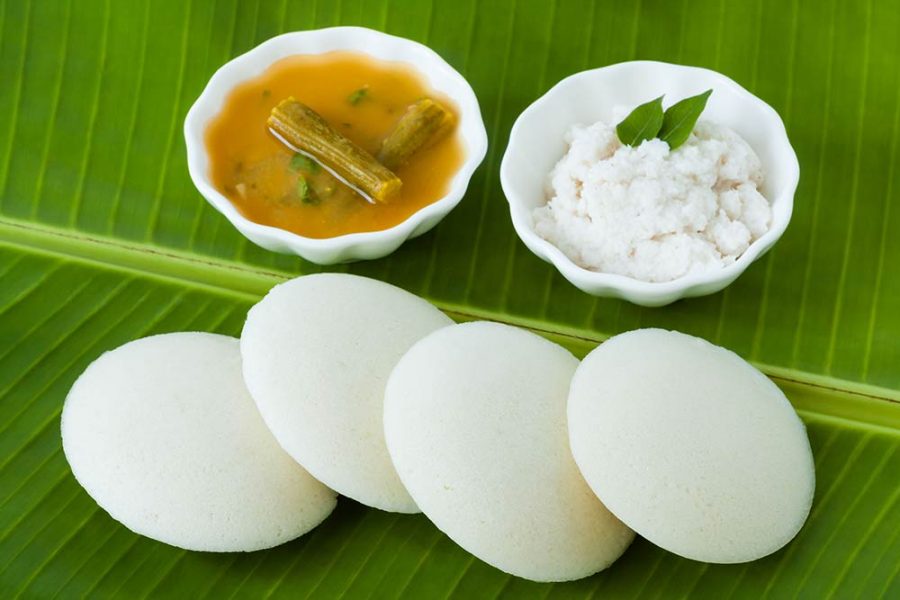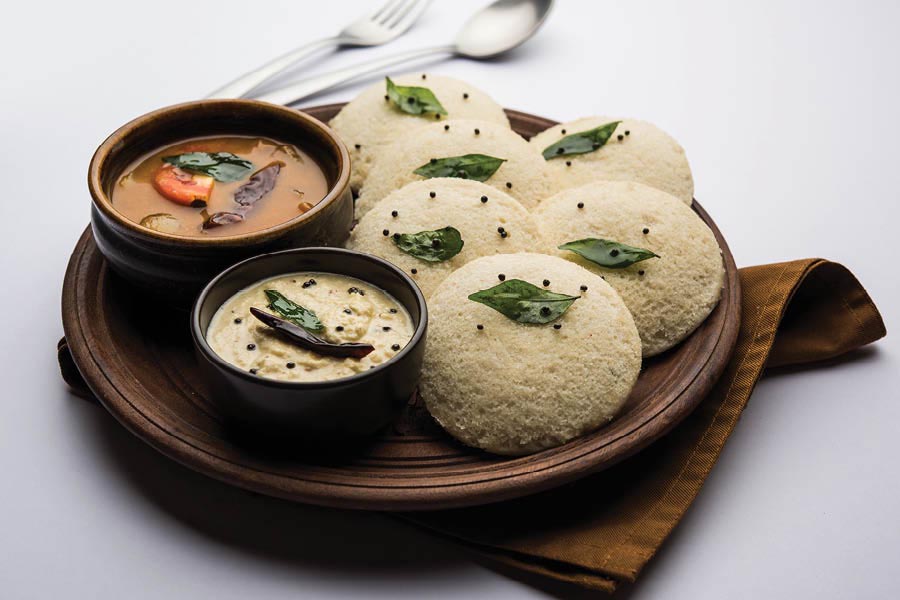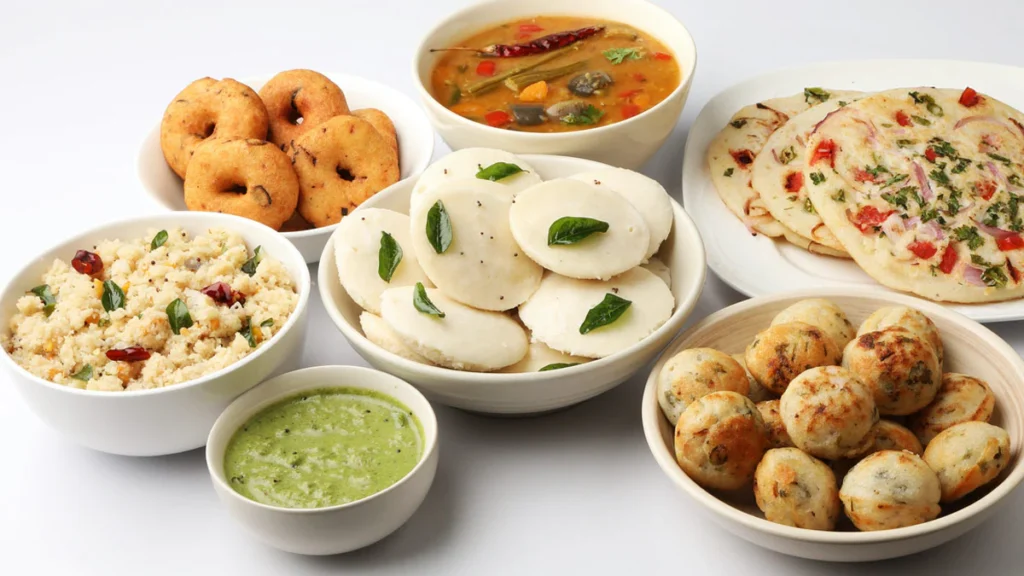Soft, fluffy, and full of flavor—idli sambar is more than just breakfast in South India; it’s a culinary tradition. Served hot with aromatic sambar and coconut chutney, this dish is beloved by millions across India and around the world. Whether you’re seeking a healthy start to your day or want to explore authentic Indian food, idli sambar is a perfect choice.
In this article, we explore everything about this popular combination—from ingredients and preparation to health benefits and cultural significance. If you’re new to Indian cuisine, this is your delicious starting point.
What Is Idli Sambar?

Idli sambar is a comforting duo of two classic South Indian recipes:
- Idli: A soft, steamed rice cake made from a fermented batter of rice and urad dal (black gram lentils).
- Sambar: A mildly spicy, tangy lentil-based vegetable stew, made with toor dal (pigeon peas), tamarind, spices, and seasonal vegetables.
Together, they form a nutrient-rich, light-yet-filling meal that is typically served for breakfast but can be enjoyed any time of the day.
Idli sambar is gluten-free, vegetarian, and easily digestible, making it a favorite among people of all ages. It’s especially popular in states like Tamil Nadu, Karnataka, Andhra Pradesh, and Kerala.
What Is Idli Sambar Made Of?
Ingredients for Soft Idlis:
- Raw rice or idli rice (parboiled rice)
- Whole urad dal (split black gram)
- Fenugreek seeds (optional, for fermentation)
- Salt
- Water (for grinding and steaming)
Ingredients for Flavorful Sambar:
- Toor dal (pigeon peas)
- Tamarind pulp
- Drumstick (moringa), carrots, brinjal, or other vegetables
- Mustard seeds
- Curry leaves
- Dried red chilies
- Asafoetida (hing)
- Sambar powder (a mix of coriander, cumin, fenugreek, and dried red chilies)
- Salt
- Oil or ghee
Optional Accompaniments:
- Coconut chutney: Made from grated coconut, green chilies, and tempered mustard seeds.
- Tomato chutney: Tangy, spicy chutney made with tomatoes and garlic.
- Podi (Gunpowder): A dry spice mix served with ghee or sesame oil.
This combination provides a balance of carbohydrates, proteins, and dietary fiber, making it a wholesome, energizing meal.
Step-by-Step Overview of Preparation
How to Make Idlis:
- Soaking: Soak rice and urad dal (with fenugreek seeds) separately for 4–6 hours.
- Grinding: Grind them separately into a smooth batter and then mix.
- Fermentation: Let the batter ferment overnight or for 8–12 hours.
- Steaming: Pour the batter into greased idli molds and steam for 10–12 minutes.
How to Make Sambar:
- Pressure cook toor dal until soft and mash it well.
- Soak tamarind in warm water and extract the juice.
- Cook vegetables in the tamarind water with turmeric and salt.
- Add cooked dal and bring to a boil.
- Prepare tempering: In hot oil or ghee, add mustard seeds, curry leaves, dry red chilies, and asafoetida. Pour it into the sambar.
- Add sambar powder and let it simmer.
Pro Tip: Add a spoon of ghee on top of your idli or sambar before serving for enhanced flavor.
Health Benefits of Eating Idli Sambar

This traditional dish isn’t just tasty—it’s also incredibly healthy:
- Low in calories and fat: Since idlis are steamed, they are light and oil-free.
- High in protein: Thanks to urad dal and toor dal.
- Good for digestion: Fermentation introduces gut-friendly bacteria.
- Gluten-free: Suitable for those with gluten intolerance.
- Vegetable-rich: Sambar includes a mix of fiber-rich veggies and spices.
Ideal for both kids and adults, idli sambar fits into diabetic diets, weight-loss plans, and fitness routines.
Idli Sambar in Indian Households & Restaurants
In a typical South Indian household, idli sambar is not just food—it’s a part of the morning ritual. The smell of steaming idlis and simmering sambar fills the kitchen and brings families together.
In restaurants, idli sambar is often served on a stainless steel plate with side compartments filled with coconut chutney, tomato chutney, and sometimes podi. It’s a staple in tiffin centers and South Indian breakfast joints across India and overseas.
Even international food lovers are now embracing this dish for its simplicity, taste, and health profile.
Why You Should Try Idli Sambar Today
Still wondering whether to try idli sambar? Here’s why you absolutely should:
- ✅ It’s easy to digest
- ✅ It’s a complete vegetarian meal
- ✅ Packed with flavor and nutrients
- ✅ Quick to reheat and serve for busy mornings
- ✅ Loved by kids and adults alike
Whether you’re new to Indian food or already a fan, idli sambar deserves a spot on your plate.
Explore More South Indian Recipes

Want to discover more delicious Indian dishes? Visit Indian Food Guide to explore a wide range of traditional recipes, preparation tips, and authentic flavors from different Indian states.
FAQs About Idli Sambar
1. What is idli sambar made of?
Idli sambar is made of steamed rice cakes (idlis) and lentil-based vegetable stew (sambar). Idlis use rice and urad dal, while sambar is made from toor dal, vegetables, tamarind, and spices.
2. Is idli sambar good for weight loss?
Yes, idli sambar is low in fat, high in protein, and contains dietary fiber, making it a good choice for weight management when eaten in moderation.
3. Can idli sambar be eaten for dinner?
Absolutely! While it’s a traditional breakfast, idli sambar is light and filling enough to be enjoyed as a dinner meal, especially when paired with chutney.
4. How is idli sambar different from dosa?
Idli and dosa use similar batters, but dosa is a crispy, pan-fried crepe, while idlis are soft and steamed. Both are often served with sambar and chutneys.
5. How do I store leftover idli and sambar?
Store idlis in an airtight container in the fridge for up to 2 days. Reheat by steaming or microwaving with a sprinkle of water. Sambar should be cooled and refrigerated, and reheated before use.
Celebrate Special Occasions with Thai Flavors
Planning a special occasion? KB Thai offers the perfect venue with its garden courtyard and authentic Thai dishes. Located at Shop 1, 115 Blackwall Road, Woy Woy, NSW 2256, it’s an ideal spot for birthdays, corporate events, and more. Experience exceptional service and flavors at kbthai.com.au.
Conclusion
Idli sambar is more than just food—it’s comfort, culture, and nutrition served on a plate. Whether you’re cooking at home or ordering at a restaurant, this dish offers a delightful taste of South Indian heritage.
So go ahead—give it a try. Your taste buds and your body will thank you.